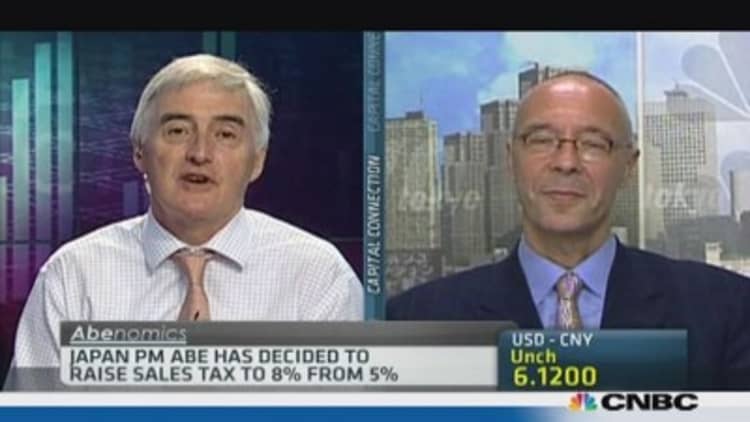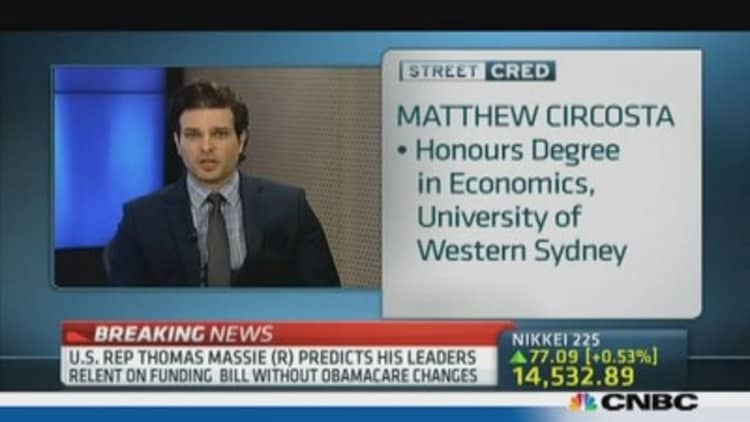It's not what Australia's central bank said in its monetary policy statement this week, but what it didn't say that appears to be causing a stir.
The Reserve Bank of Australia (RBA) on Tuesday left its benchmark interest rate steady at 2.5 percent and did not comment about the outlook for the economy in its policy statement. Its tone was less dovish than expected, fueling talk that the rate-cutting cycle that began in late 2011 is close to ending.
"With the RBA removing the easing bias from the statement and (as expected) leaving rates on hold, the expectations for a November rate cut have dropped to 26 percent from about 37 percent before," said Evan Lucas, market strategist at trading firm IG.
(Watch now: Timeto position for higher rates in Australia?)

"It looks like they have put the cue back on the rack and will wait to see what happens next year," he added.
Strategists say the RBA's statement helps explain why the Australian dollar rose more than 1 percent against the U.S. dollar on Tuesday. The Aussie dollar stood at about 94 U.S. cents on Wednesday, up more than 6 percent from a three-year low set in August.
(Read more: Is the Aussie dollar headed for parity?)
Australia's central bank has cut borrowing costs twice this year, pushing the key interest rate to a record low of 2.5 percent in August to help bolster the non-mining sectors of the economy as mining investment peaks.
But monetary policy has been on hold since then amid signs of a recovery in the economy.
Data released on Tuesday showed that Australian retail sales rose 0.4 percent in August from a month earlier, just above market expectations for a 0.3 percent increase.

A survey from property consultant RP Data-Rismark showed home prices in Australia's biggest cities rose 1.6 percent in September from the previous month to hit a record as low loan rates helped boost the real estate market.
(Read more: Australia's post-election cheer may prove short lived)
"The combination of stronger data and less dovishness from the RBA has pushed the prospect of another rate cut to February of next year," said Kathy Lien, managing director at BK Asset Management, wrote in a note.
According to IG's Lucas, big banks in Australia on Wednesday were also pushing back their expectations for a rate cut to February.
Still, some analysts said it was too soon to rule out a near-term cut in rates.
"The RBA is in a slightly tighter position now and there is less room for rate cuts," said Vishnu Varathan, market economist at Mizuho Corporate Bank. "But from a broader economic perspective, I wouldn't say the scope for another cut it totally off the table."
(Read more: Aussie getsboost after Fed shocker, but will it last?)
A rebound in the Australian dollar is one factor that could tempt the RBA to lower rates again. The RBA had been calling for a weaker currency to help exporters.
"The other thing to remember is the U.S. and the impact the Fed [Federal Reserve] has on the Aussie dollar," said Lucas at IG. "Despite good U.S. economic news, there are concerns about the debt ceiling and that has pushed the U.S. dollar down and the Aussie up, which is something we can't control."
—By CNBC.Com's Dhara Ranasinghe; Follow her on Twitter @DharaCNBC


